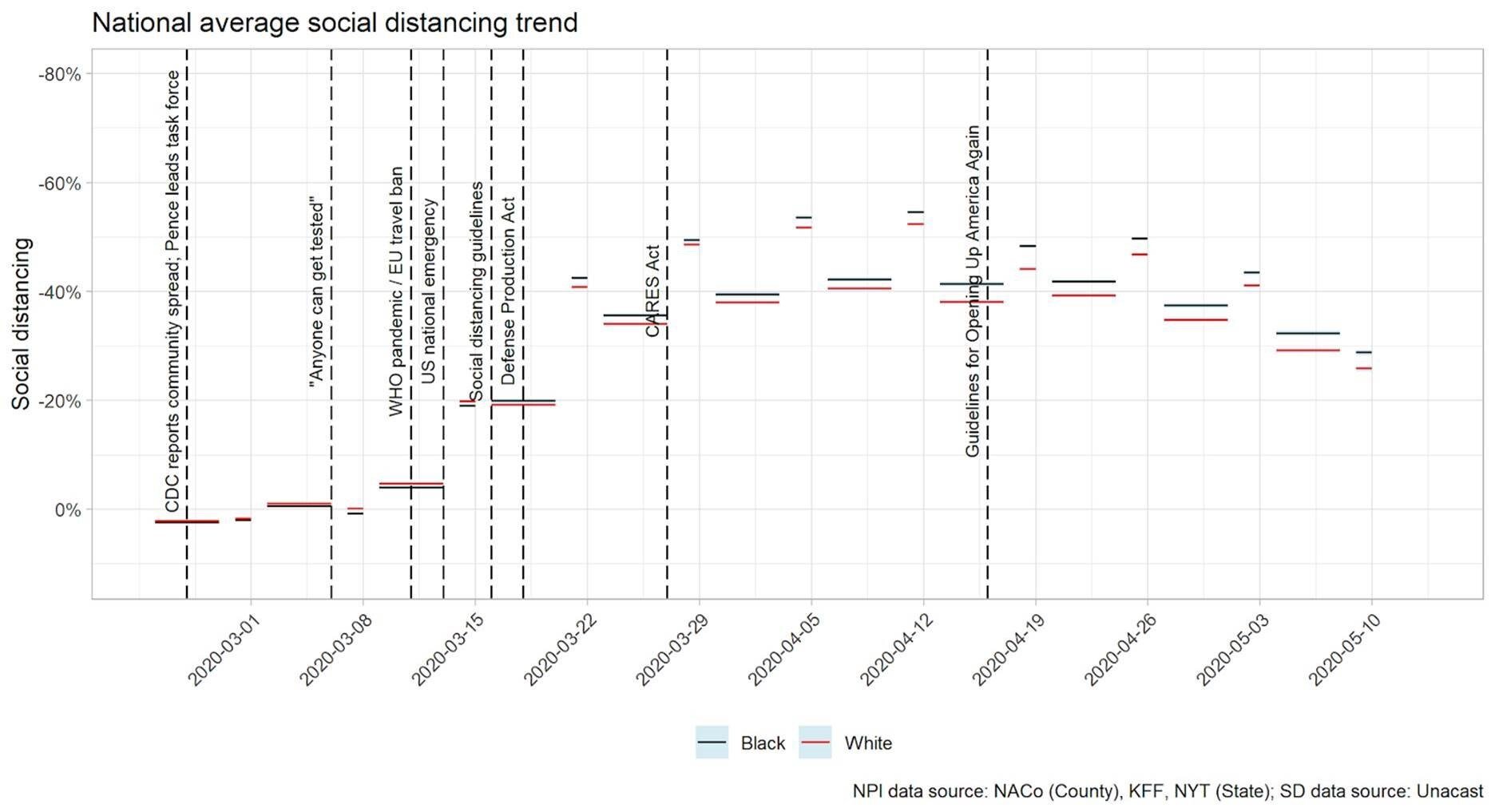Despite being less likely to cope with or recover from an outbreak, people living in U.S. counties that are more vulnerable to COVID-19 tend to social distance less than those living in less vulnerable counties, according to a new analysis of Americans’ social distancing behavior by Surgo Foundation. The organization found one notable exception: Black Americans were more likely to engage in social distancing behavior than their white counterparts.
The analysis also found that Americans’ social distancing peaked on April 12— four days before President Trump announced his Opening Up America Again guidelines. After this peak, and despite continued growth in the total number of new COVID cases, the foundation found significant declines in social distancing nationally. Their analysis also found that shifts in social distancing began prior to specific guidance or policy enactments--suggesting that people may relax their social distancing behavior in anticipation of policy changes.
For its analysis, Surgo Foundation used mobile phone data from Unacast, overlaid with data from Surgo’s own COVID Community Vulnerability Index, to study Americans’ social distancing behavior both before, and after, three major COVID-related events: the World Health Organization’s declaration of a global pandemic (March 11), President Trump’s announcement of his Opening Up America Again guidelines (April 16), and a week in which several states reopened (week of April 27). Separately, the organization also compared social distancing across population groups based on race and employment sector.
“While we found that Black Americans engage in social distancing more than White Americans, social distancing alone is not enough to address the real issue: deep inequality that leaves many Black people fundamentally more vulnerable to COVID-19,” said Dr. Sema Sgaier, executive director of Surgo Foundation. “We need precise, targeted interventions based on data, rather than one-size fits all approaches that fail to acknowledge the specific needs of those communities that will bear the biggest burden of this pandemic.”
National Average Social Distancing by Race
In terms of employment sector, the analysis found three groups of social distancers. Employees in sectors requiring less customer-facing interaction, such as information and professional services, social distanced the most--while employees in sectors such as manufacturing, retail, and food services social distanced less. But the employees in sectors that social distanced the very least were those in agricultural and mining.
Employment Sectors by Social Distancing:
Most social distancing:
Arts Entertainment and Recreation
Educational Services
Finance and Insurance
Information
Management of Companies and Enterprises
Professional Scientific and Technical Services
Real Estate and Rental and Leasing
Middle level of social distancing:
Accommodation and Food Services
Administrative and Support and Waste Management and Remediation Services
Construction
Health Care and Social Assistance
Manufacturing
Other Services (except Public Administration)
Retail Trade
Transportation and Warehousing
Utilities
Wholesale Trade
Lowest social distancing:
Agriculture Forestry Fishing and Hunting
Mining Quarrying and Oil and Gas Extraction
Access the full paper here.
Methodology
This analysis was conducted using Unacast’s social distancing data from February 24th - May 10th, 2020 to study how social distancing changed before and after: 1) The World Health Organization’s declaration of a global pandemic, 2) White House announcement of “Opening Up America Again” (OUAA) guidelines, and 3) the week of April 27 when several states reopened. To measure intention to social distance, Surgo Foundation assessed the difference between weekday and weekend behavior as most individuals have more control over weekend leisure time. To investigate social distancing’s sensitivity to different population characteristics, the foundation compared social distancing time-series data across county vulnerability as measured by Surgo Foundation’s COVID-19 Community Vulnerability Index (CCVI) which defines vulnerability across socioeconomic, household composition, minority status, epidemiological, and healthcare-system related factors. The foundation also compared social distancing across population groupings by race, 2016 presidential election voting choice, and employment sectors using US Census Bureau’s 2018 American Community Survey data, MIT Election Data and Science Labdata, and US Bureau of Labor Statistics’ Quarterly Census of Employment and Wages data, respectively.
Media Contact: Bethany Hardy at Surgo Foundation at bethanyhardy@surgofoundation.org or (202) 277-3848.


